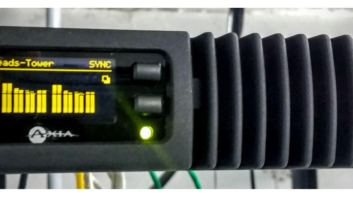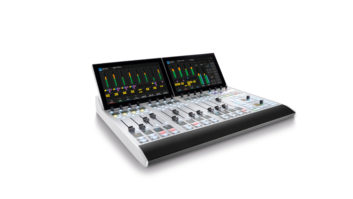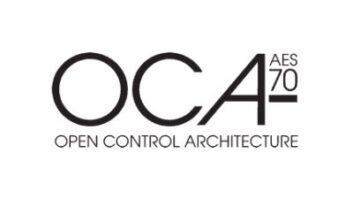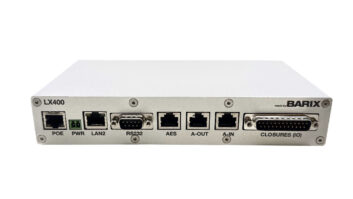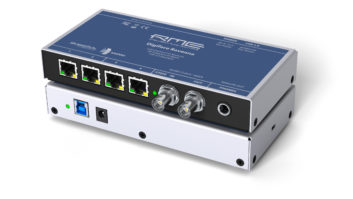
A Barix Instreamer 100 ORLANDO, FLA. — As a startup broadcaster, there’s a tricky balance between sounding professional and keeping costs manageable. That balance intensifies for a low-power broadcaster focused on serving quality programming to local communities.
We know this all too well at WUOH(LP) in Orlando, Fla., a college music-oriented, low-power station that launched services on April 1.
We looked to IP audio for our STL system as one means of keeping costs low. We found an array of products on the market that varied widely in price and feature set. Our evaluation led us to the Barix STL solution in the end, using an Instreamer IP encoder and Exstreamer IP decoder to move audio from studio to transmitter with a minimal investment.
Procured through U.S. Barix distributor LineQ, the Barix STL system was simple to set up, and has streamed broadcast-quality audio reliably since going online. During configuration, we easily navigated the process of establishing IP addresses for each box, and opening the correct firewall ports to enable continuous audio transport.
We fine-tuned the settings for 128 kbps (48 kHz) MP3 coming out of the studio-based Instreamer, and for 192 kbps at the Exstreamer, which hands the higher bitrate audio off to a software-based stereo processor in preparation for transmission. Upon connecting the Instreamer to a router and computer via built-in optical connections, we were live on the air and broadcasting to 150,000 students across 20 local college campuses — not to mention the surrounding population. The audio is crisp and clean, with no low frequency, hums or dropouts from lost packets.
While the audio sounds great, reliability is perhaps the biggest benefit. The state of Florida is the lightning capital of the world, and the Orlando region gets its share of electrifying storms. The power often goes dark as a result, but the Barix Exstreamer immediately picks up the slack to keep us on the air.
The Exstreamer is equipped with a USB port and built-in automatic switching. With a 1GB dongle and 200 songs, the Exstreamer keeps us on the air for any reasonable power outage duration. With only a seconds-long blip upon the power returning, the transition from USB play to live broadcast is barely discernible. The Exstreamer at the transmitter site ultimately saves us a lot of money, eliminating computers and expensive components typically required to keep stations on the air during power outages and disaster situations.
The Barix IP STL system also offers flexible streaming options that allow us to simultaneously feed a Shoutcast server for our online stream. This translates to another cost savings by reducing the hardware required to move streams across two broadcast platforms.
Speaking of reductions, the compact size of both units — no larger than a pill box — returns valuable rack for other applications at both ends. The long-term cost savings add up quickly. With only a monthly Internet service charge, we’re saving up to $5,000 a year compared to ISDN; and potentially more than that compared to T1. The investment in IP audio is paying off in dividends, with Barix delivering the reliability, flexibility and broadcast-quality audio we need to succeed.
For information, contact Brenda Stadheim at LineQ/Barix at (866) 815-0866 or visit www.barix.com.





